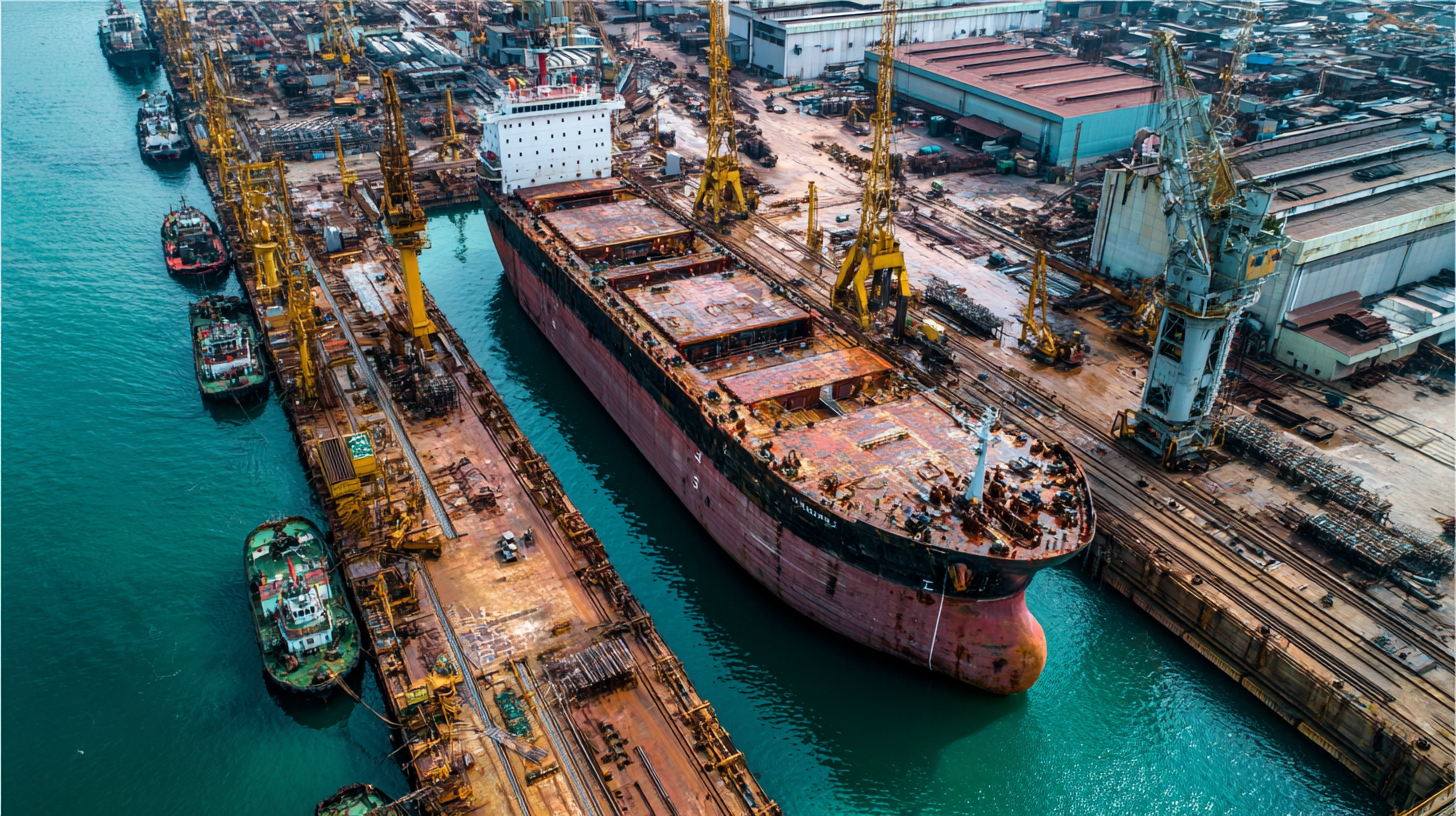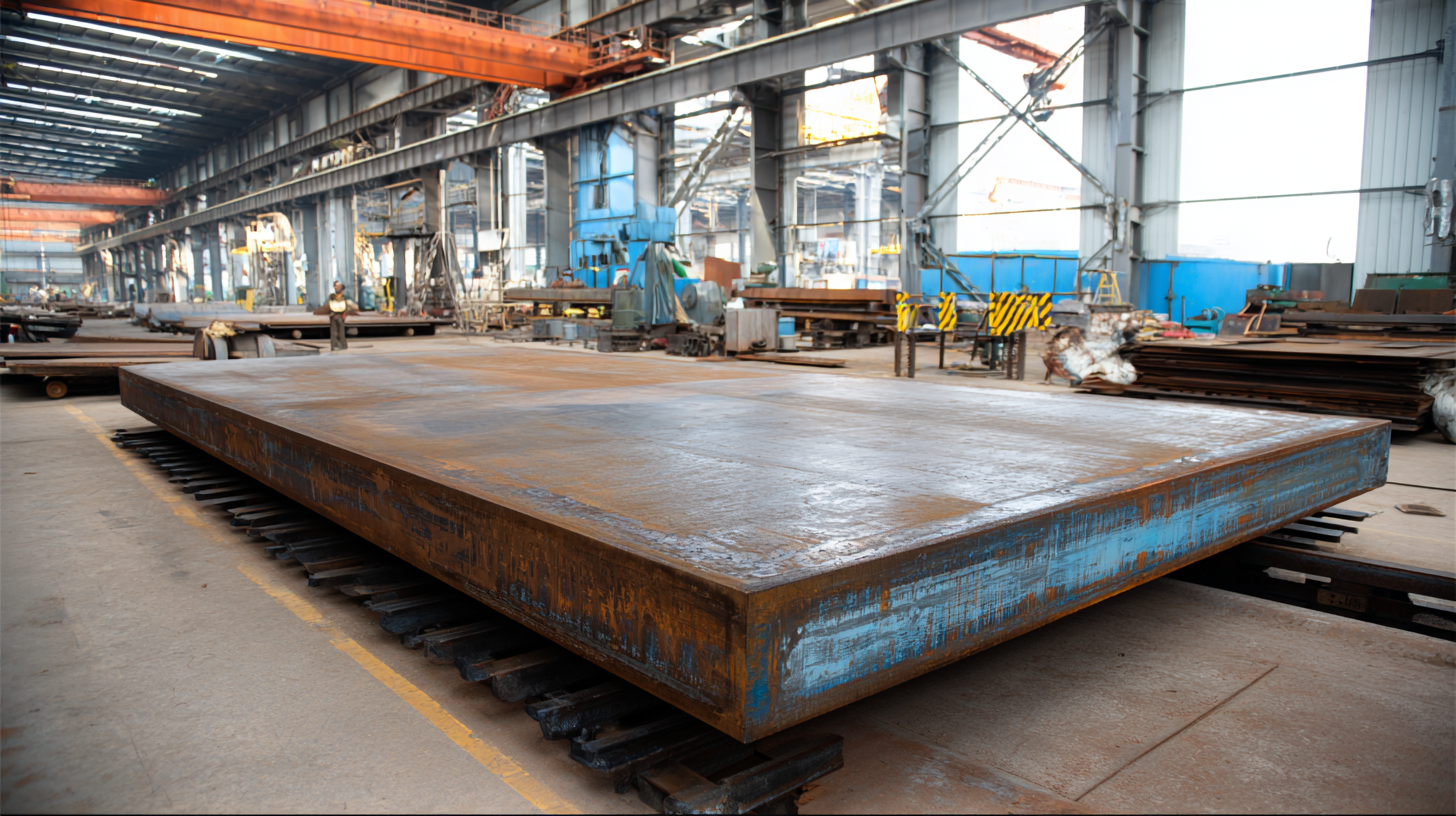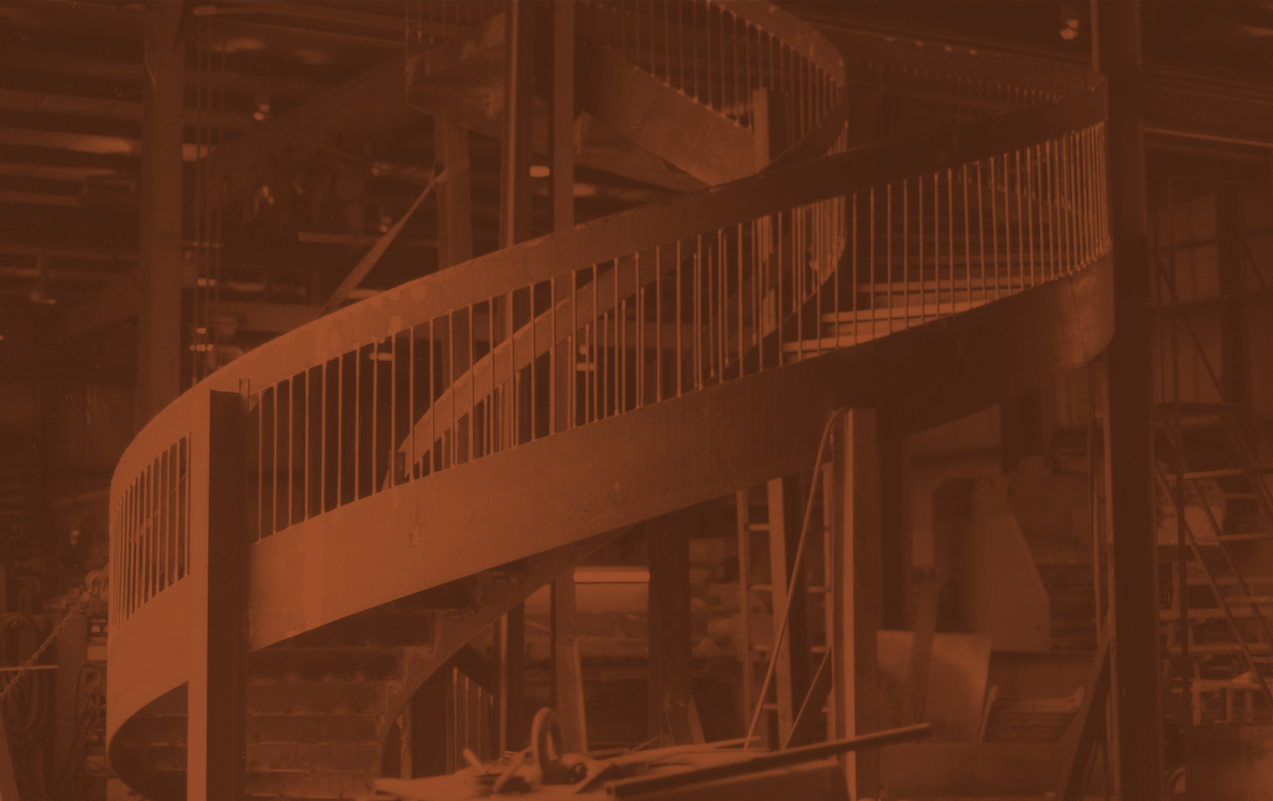





In the ever-evolving landscape of heavy steel plate fabrication, innovation has become the cornerstone of achieving efficiency, sustainability, and enhanced performance in industrial projects. As we approach 2025, advancements in technology and processes are crucial for meeting the demanding requirements of various sectors.
 John Smith, a leading expert in heavy steel plate fabrication, emphasizes this necessity, stating, “Innovation in fabrication techniques is not just an option; it’s a requirement for staying competitive in today’s industrial market.”
John Smith, a leading expert in heavy steel plate fabrication, emphasizes this necessity, stating, “Innovation in fabrication techniques is not just an option; it’s a requirement for staying competitive in today’s industrial market.”
The upcoming year is set to witness a combination of time-tested methods and groundbreaking technologies that will redefine the capabilities of heavy steel plate fabrication. From the integration of automation and robotics to improvements in material science, these innovations promise to enhance productivity while reducing waste. As industries push towards greater sustainability, the implementation of eco-friendly practices in fabrication processes is becoming increasingly significant.
This article will explore the top 10 innovations predicted to shape the future of heavy steel plate fabrication, providing insights into how these advancements will impact industrial projects and drive the sector forward.
As we delve into these developments, it’s essential to recognize that each innovation not only serves as a solution to current challenges but also sets the stage for continued growth and transformation in heavy steel plate fabrication. The next wave of change is upon us, and understanding these innovations is key for stakeholders looking to thrive in a competitive environment.
The advancements in automation for steel plate cutting processes are set to transform the heavy steel plate fabrication landscape by 2025. The global plasma cutting machine market is projected to grow significantly, expanding from $699.5 million in 2025 to $905.2 million by 2032, reflecting a compound annual growth rate (CAGR) of 3.8%. This growth underscores the increasing reliance on automated solutions in the manufacturing sector, enabling enhanced precision and efficiency in the cutting processes.

One notable innovation is the emergence of compact automated systems that optimize ply stacking and cutting. These systems not only streamline the material handling processes but also reduce the operational footprint, making them highly desirable for industrial projects. The integration of automation technologies facilitates the redesign of processes such as cutting, weighing, and stacking of materials like sheet molding compound (SMC) and dry fiber fabrics. As the industry adapts to these innovations, businesses can expect improved production rates and higher-quality outputs, which are essential in today's competitive marketplace.
The integration of AI and machine learning in heavy steel plate fabrication is set to revolutionize the industry by significantly enhancing precision and efficiency. By leveraging vast amounts of data collected from manufacturing processes, these technologies can predict outcomes, optimize production schedules, and identify potential quality issues before they manifest. This proactive approach not only minimizes waste but also maximizes resource utilization, making it easier for companies to meet tight deadlines while maintaining high standards.
Moreover, AI-driven algorithms can analyze historical patterns and real-time data to fine-tune fabrication techniques, enabling more accurate cutting, welding, and assembly processes. This ensures that each component manufactured meets precise specifications, reducing the need for costly rework. As manufacturers adopt these innovative technologies, they are also likely to experience improved safety protocols, as AI systems can monitor conditions and potential hazards on the shop floor. Overall, the incorporation of AI and machine learning in heavy steel plate fabrication stands to create a more streamlined, reliable, and competitive landscape for industrial projects.

The heavy steel plate fabrication industry is witnessing a transformative shift towards sustainable practices, aligning with global trends in environmental responsibility. As reported, the global extra thick steel plate market is projected to reach USD 214.3 billion by 2033, growing at a CAGR of 7.4%. This robust demand is propelling manufacturers to adopt greener technological innovations that minimize carbon footprints and promote recycling within the production processes.
In parallel, advancements in automation and digitalization are enhancing operational efficiency while also fostering sustainable solutions. For instance, companies are increasingly exploring high-strength stainless steel for various applications, leading to reduced material waste and improved lifecycle management. The adoption of these sustainable practices not only addresses the industry's environmental challenges but also positions heavy steel plate fabrication as a vital player in driving forward the circular economy, fundamental for industries aiming to meet future regulatory standards and consumer expectations. Additionally, as the structural steel market is expected to exceed USD 188.63 billion by 2034, the emphasis on sustainable manufacturing methods will be crucial for companies looking to thrive in this competitive landscape.
In the domain of heavy steel plate fabrication, innovative coating solutions are revolutionizing the industry by enhancing both durability and performance. As industrial projects demand materials that can withstand harsh environments, advanced coatings are being developed to improve resistance to corrosion, abrasion, and extreme temperatures. These coatings not only extend the lifespan of steel plates but also reduce maintenance costs and downtime, making them an essential element in industrial applications.
Among the most promising innovations are nanoparticle-infused coatings that offer exceptional adhesion properties and protective characteristics. These cutting-edge solutions create a barrier that is resistant to chemicals and environmental stressors, significantly increasing the operational efficiency of industrial structures. Moreover, advances in self-healing coatings are emerging, allowing for the maintenance of structural integrity even after minor damage. This technology not only bolsters safety but also minimizes the need for frequent replacements and repairs, showcasing the potential of innovative coatings to transform heavy steel plate fabrication for the better.
| Innovation | Description | Beneficial Feature | Expected Implementation Year |
|---|---|---|---|
| Nano-Coating Technology | Advanced coating that repels corrosive agents. | Enhanced corrosion resistance | 2025 |
| 3D Laser Cutting | Precision cutting with reduced material waste. | Increased accuracy and efficiency | 2025 |
| High-Temperature Resistant Alloys | Alloys designed to withstand extreme temperatures. | Greater durability in thermal environments | 2026 |
| AI-Driven Welding Automation | Automated welding processes utilizing AI for precision. | Improved weld quality and speed | 2025 |
| Eco-Friendly Coatings | Biodegradable and sustainable coating options. | Reduced environmental impact | 2025 |
| Robotic Steel Plate Handling | Robots to automate the handling of heavy plates. | Enhanced safety and efficiency | 2026 |
| Hybrid Welding Techniques | Combining traditional and modern welding methods. | Flexibility and improved material bonding | 2026 |
| Smart Monitoring Systems | Systems for real-time monitoring of fabrication processes. | Prevention of errors and delays | 2025 |
| Portable Plasma Cutting Tools | Lightweight tools for on-site cutting tasks. | Increased mobility and convenience | 2025 |
| Thermal Imaging for Defect Detection | Using thermal imaging to identify material flaws. | Early detection of potential issues | 2026 |
The steel fabrication industry is on the brink of a transformation, with smart supply chain management poised to revolutionize logistics. By integrating advanced technologies such as real-time tracking, predictive analytics, and automated inventory management, manufacturers can streamline operations and enhance efficiency. This move towards digitization allows for better forecasting of material needs and more responsive production scheduling, significantly reducing lead times and costs.
Moreover, adopting a smart supply chain fosters collaboration between suppliers, manufacturers, and clients. Cloud-based platforms enable all stakeholders to share critical data, ensuring that everyone involved is equipped with up-to-date information. This transparency helps mitigate risks, such as delays or discrepancies in orders, and promotes a more agile adaptation to changing market demands. As industrial projects become increasingly complex, leveraging these innovations in logistics not only enhances the overall productivity but also positions companies for long-term success in the competitive heavy steel plate fabrication landscape.




